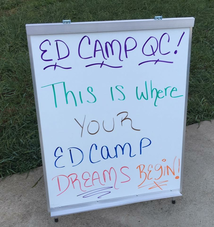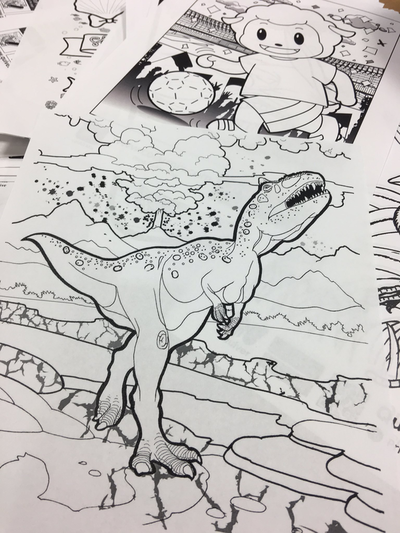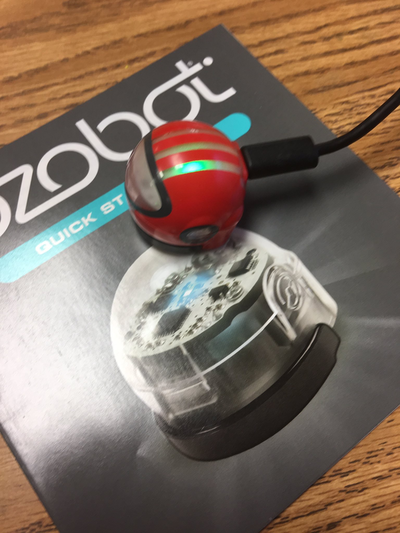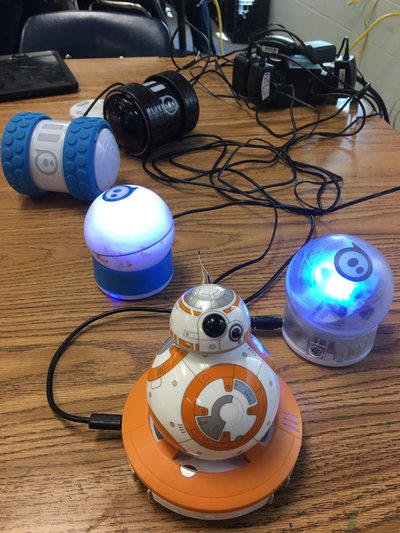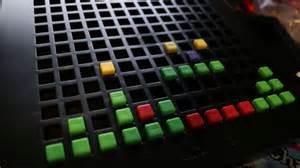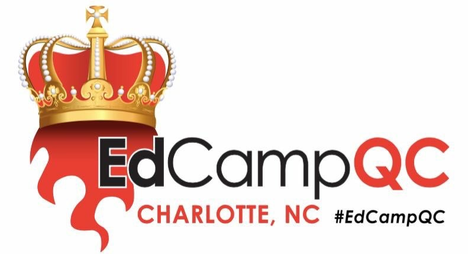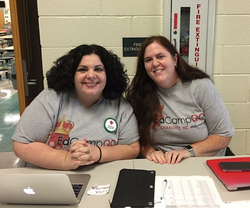
On October 1st the third annual EdCamp Queen City (@EdCampQC) was held at Barringer Elementary School in Charlotte NC. EdCamps are an incredible trend in professional development where the participants guide the training. I was fortunate to once again be part of a group of dedicated educators who organized this event. It was an exciting Saturday of learning and growth!
The day started with an overview of EdCamps given by Nathan Stevens (@nathan_stevens). Nathan shared how the day would run and that the participants had an opportunity to attend sessions that they felt best met their learning needs. The participants not only choose the sessions at EdCamps that will be offered that day but also decide which of those sessions best meet their individual professional needs.
One of my favorite parts of the day was the MakerSpace. In the MakerSpace teachers were able to test out and learn about different tools to use with their students. Something new I learned about while in the MakerSpace was the augmented reality app Quiver (@quivervision). Students are able to color and draw pictures and then see them come to life! This is a great tool to use with your students for story writing. Since EdCampQC I have used this app with several of my students and have seen an increase in not only the amount of text but in the details in their writing.
Another tool that I enjoyed using that day was Sphero (@sphero). I have used Sphero before with my students but loved seeing all the different Sphero options available. The brainstorming of ideas with other participants was also amazing! I learned new strategies to use with my students. I came back after EdCampQC and was able to share a lesson, Rate Time and Distance, which another teacher suggested with my students. This lesson is part of the SPRK education program website but I had never used it before. My students loved it and I plan to use more lessons off the site.
Ozobot (@Ozobot) is a robot that I had heard about and seen in use but had never used myself prior to EdCampQC. Ozobot is a tiny robot designed to teach kids coding and programming basics. It is an engaging and easy robot to use with younger as well as older students. One idea that was shared was having the Ozobot be Little Red Riding Hood and having Kindergartners code how she gets to Grandma’s House! With Ozobot students have the opportunity to be creative and have fun while they learn.
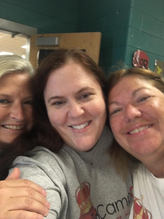
Bloxels Builders (@bloxelsbuilders) is another tool that I was able to use in new ways as a result of the MakerSpace. Bloxels is a hands-on platform that gives kids a chance to build, collaborate and tell stories through video game creation. There is a free app available as well as a board that you can purchase. I am currently hoping to get five sets of the board through my Donors Choose (https://www.donorschoose.org/project/creativity-and-critical-thinking-through/2285129/) project. One teacher in the MakerSpace shared how she is using Bloxels to help students visualize their creations prior to writing. This is just one idea I hope to use in the future with my students.
I love MakerSpaces and found the one at EdCampQC to be extremely valuable. I spent a lot of my time at EdCampQC in the Makerspace. I appreciated sharing and learning about strategies and resources to use with my students. I finally left the area to attend other sessions but found it to be one of my favorite parts of the day.
After leaving the MakerSpace I went to the session on Breakout EDU (@BreakoutEDU). Although there were many valuable and interesting sessions available this another area that really peaked my interest. I had attended a session on Breakout EDU at EdCamp Foothills (@Edcampfoothills) but wanted to learn even more about it. I appreciated the participant and leader excitement and the group was able to breakout! The more I see this tool in action the better I understand it and the different applications it can have in the classroom. There are hundreds of free lessons on the Breakout Edu website and they are not only student but teacher friendly. I love this creative tool and look forward to using it with my students.
As I end this blog post I feel that it is important to note that EdCamps are made even more special through the support that teachers receive from the different educational companies. Squirrels (@squirrels) donated our lunch that day. Yum! It made everyone’s day to feel so appreciated. Teachers also had the chance to win fabulous door prizes to use in their classroom. As I have said before it is fantastic that so many different education companies understand the value of EdCamps. Thank you to Squirrels and all the other companies that donated that day!
EdCamps are amazing and I love to attend them. I always leave with new strategies and ideas. I also love the fact that I helped to make this particular EdCamp a success. I can’t wait to start planning the fourth EdCamp Queen City!
Dr. Nancy Betler is a Talent Development Teacher at Eastover Elementary and primarily works with gifted and high-ability students in grades K-5. As a National Board Certified Teacher, she fully embraces life-long learning and has recently earned her doctorate degree. Nancy is also heavily involved with the North Carolina Association of Elementary Educators (NCAEE) and serves as a Board Member. She looks forward to connecting with you on Twitter @nbetler and being a part of your PLN!

